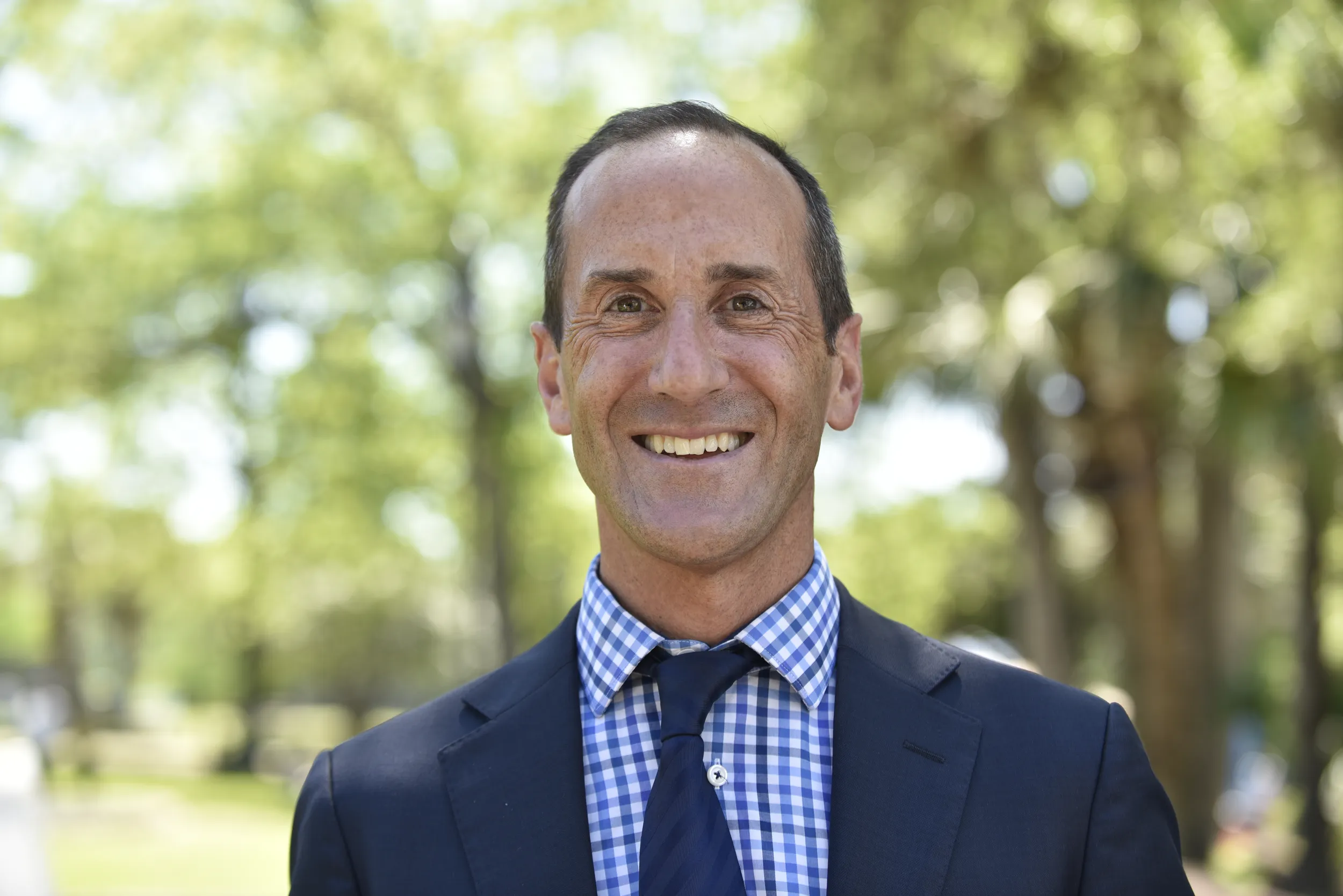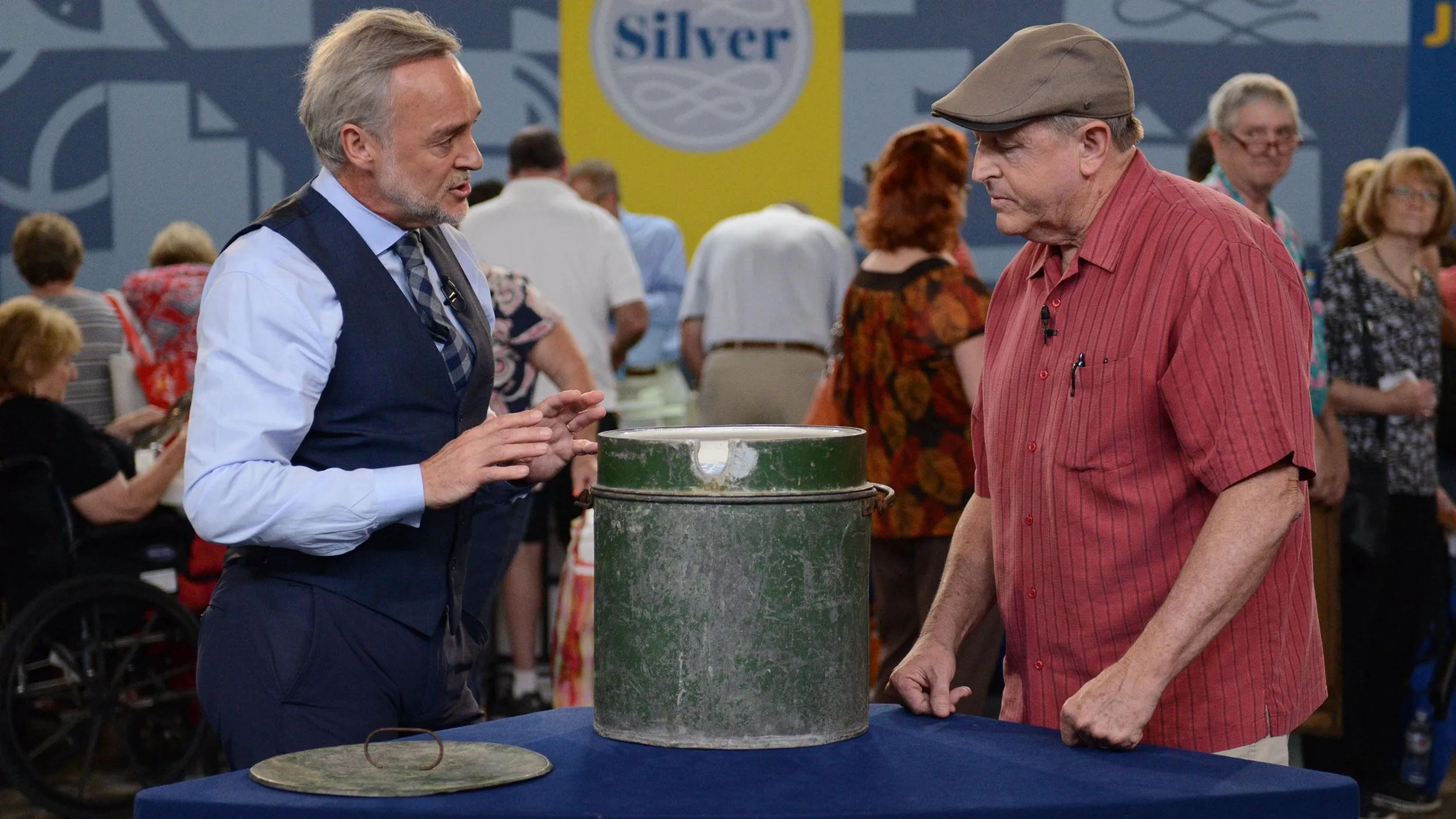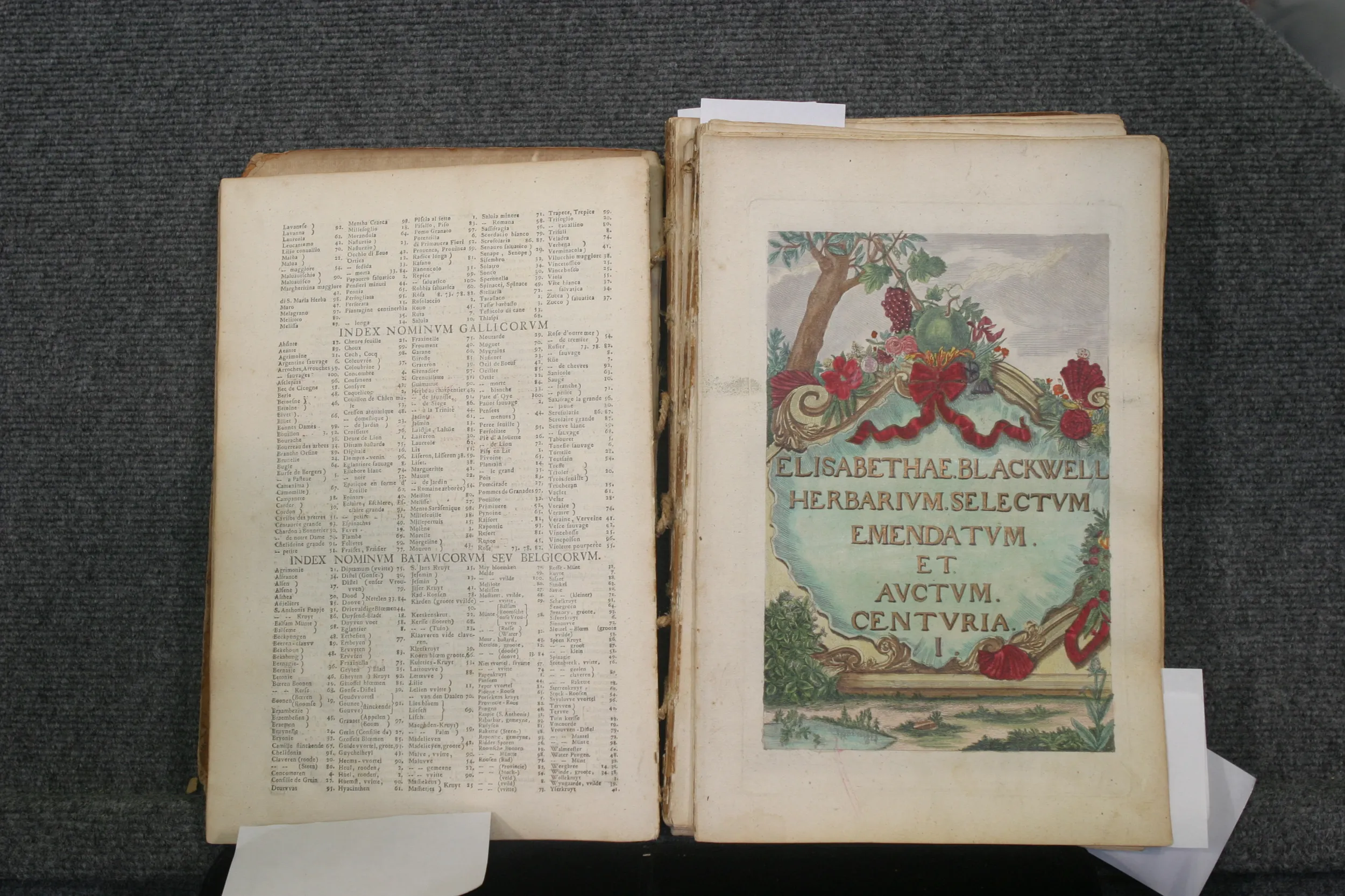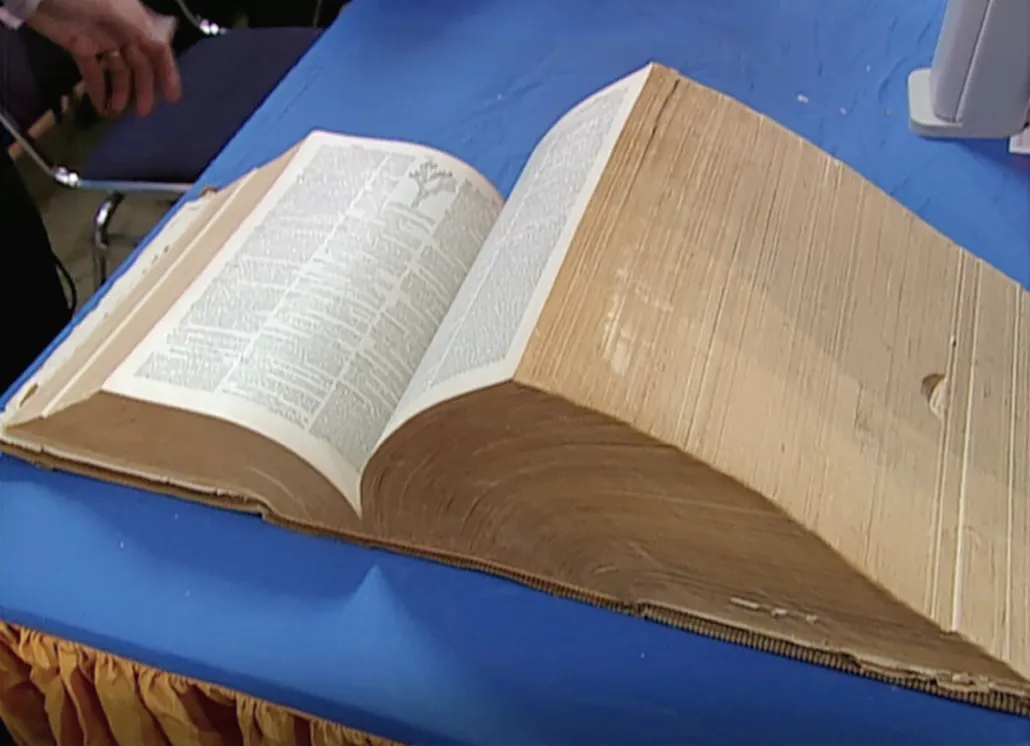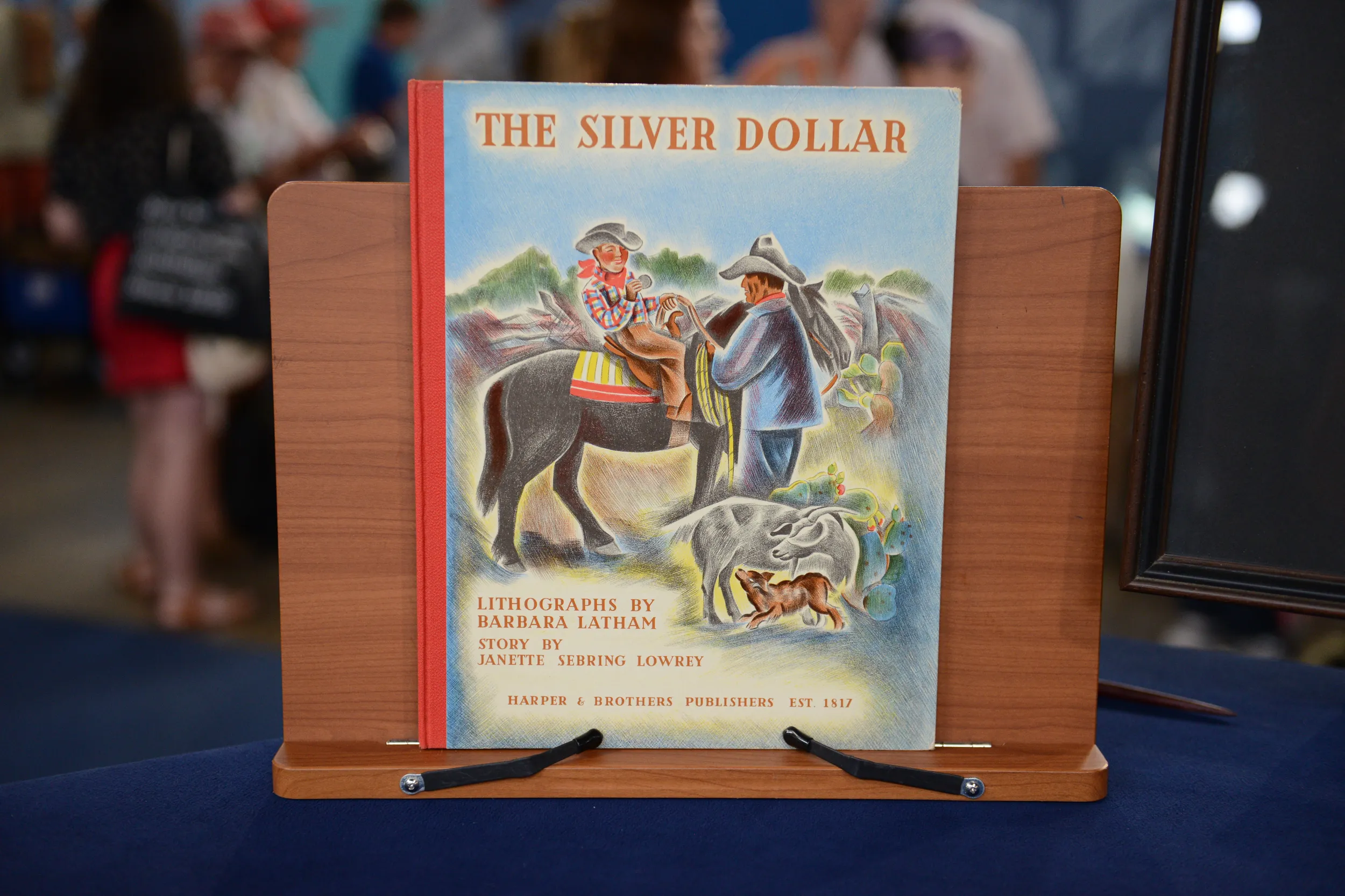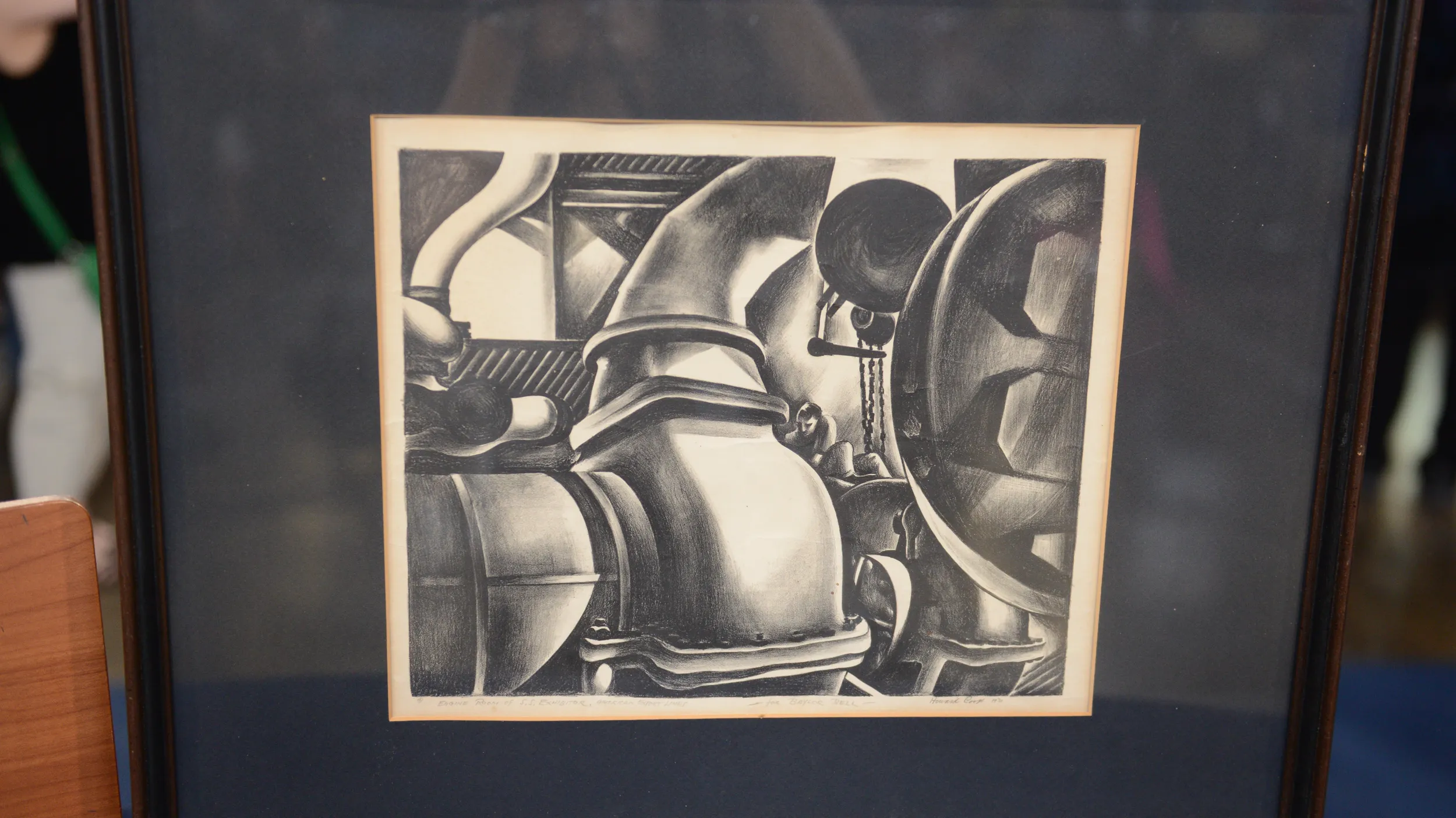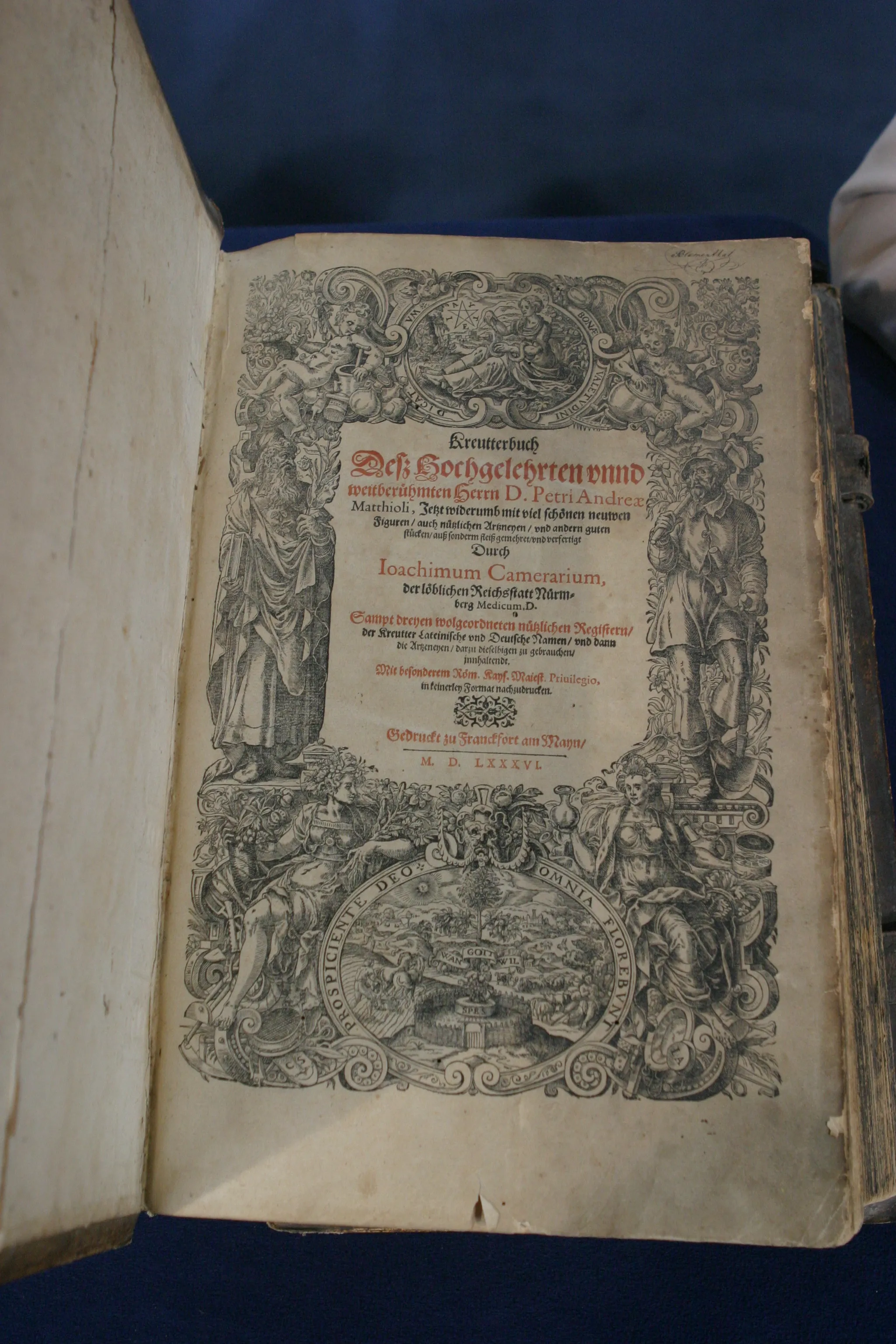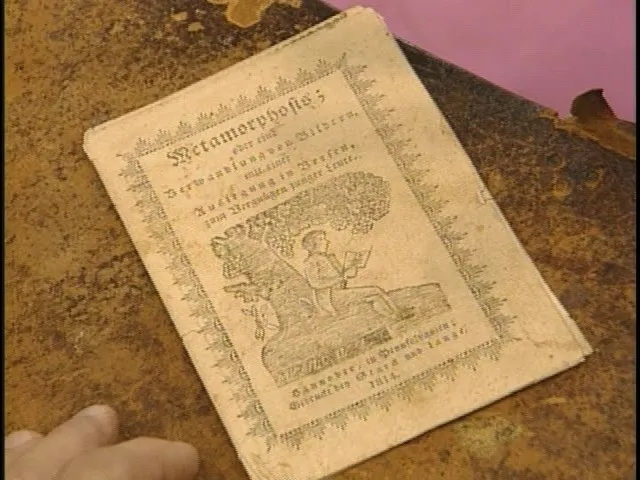GUEST: This is a painting that was done by Howard Cook, who's a Texas artist, in 1930. And he gave it to my father. They were connected because they both liked ships, and Howard used to come to our ranch in South Texas, where I was born.
APPRAISER: So your parents knew the artist then.
GUEST: Oh, yeah, they were personal friends.
APPRAISER: And do you know anything more about Howard Cook?
GUEST: Yeah, he does a lot of... did a lot of murals around the state of Texas. There's a lot of them in post offices and government buildings and...
APPRAISER: I think he did the mural at San Antonio, in the post office there, yeah
GUEST: He's done several.
APPRAISER: Howard Cook was born in 1901 in Springfield, Massachusetts, and worked on the East Coast for a while, and actually made some of his better-known prints in the 1920s and the 1930s-- sort of gritty, urban images of New York City. He first came down to this part of the country in 1926. He visited Taos, New Mexico. And it was that same year that he met a woman named Barbara Latham, who he married in 1927.
GUEST: Mm-hmm.
APPRAISER: Soon after they were married, Cook and Latham, they went on a trip to Europe and Africa. And this is actually a rendering of the engine room on that ship when they were sailing to Europe in 1929. And it's great, because it's one of these sort of classic Howard Cook images where you want the play of the light and dark and the industrial look. That's really what he's best known for, even though by the 1930s he and his wife had moved down to Taos and become members of the Taos artist community. You have the title of the print right along the bottom here, and then a very, very small rendering of that numbering is 75. It's an edition of 75. And you also have, closest to me, a book that was illustrated by Barbara Latham.
GUEST: That's correct.
APPRAISER: And what's that about?
GUEST: The story of the ranch where I was born. And it's a story about a silver dollar that I was given. And when I showed him all that and told him what I was going to do with it, then I lost the silver dollar.
APPRAISER: Yeah.
GUEST: And in the process of the book, one of them got me a pair of chaps-- or I call them leggings—and different articles that I needed to be a full-time cowboy.
APPRAISER: Yeah.
GUEST: And so at the end of the book, I was all equipped to be a full-time cowboy, but then I found the silver dollar out in the bushes. So I have to ask you, I see you sitting on the horse there with the silver dollar you found.
APPRAISER: Mm-hmm. And where is the silver dollar now?
GUEST: Right there.
APPRAISER: Oh. That looks pretty worn down.
GUEST: It's been in my pocket ever since.
APPRAISER: That's great.
GUEST: I didn't sleep with it, but I kept it in my pocket most of the time. And I've lost it two or three more times, and always found it back.
APPRAISER: For the group, if I had to put a replacement value on them, I would say $6,000.
GUEST: Good, that's great. That's great. I appreciate that. It's not going anywhere. There's lots of our kids standing in line wanting to keep it, so...
APPRAISER: That's a nice thing to have.
GUEST: Yep, and the silver dollar is worth?
APPRAISER: A dollar. $6,001.
GUEST: $6,001.
